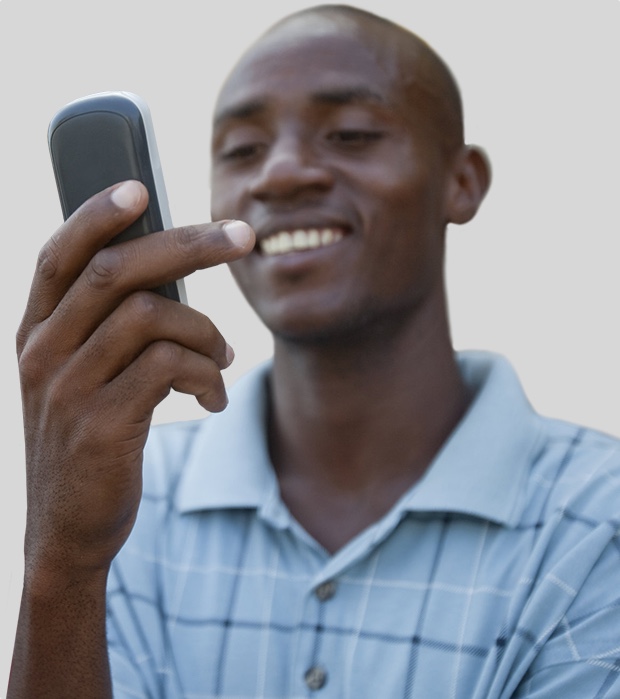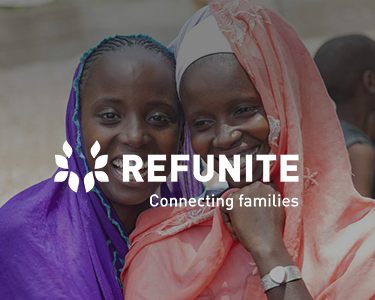
In this blog post, Vytas Bradunas, REFUNITE’s Research and Prototyping Developer, reveals six user snapshots that he captured on a recent mission to Kakuma Refugee Camp.

Last week, I travelled to Kakuma Refugee Camp in Kenya with my colleague Rachel Ombaka. The goal was to do some broad based research to improve our family reconnection app and make it easier for families to search, connect and communicate with their missing loved ones. 
One tool we have as user experience experts (“UX’ers”) is user research via field interviews. We interviewed about 30 individuals to assess their technology habits, and we observed REFUNITE’s Mobile Outreach Volunteers and their use of our family reconnection platform www.refunite.org and the app.
The families we interviewed were from Somalia, South Sudan and the Democratic Republic of Congo. We also tested a paper based prototype (model) of our mobile search tool in both Somali and Sudanese Arabic.
The goal was to see how families responded to the mobile search tool and the text to get a better understanding of our users’ needs and how the platform can be improved.
We learned a ton! For one, people in the camps often struggle to use technology…period. There’s going to be a lot of pressure on good design because even the smallest hurdle can be too much in this environment. We also found improvements for our translations and identified a few spots in the flow of the app, where many users get stuck.
During this experience, we captured 7 different user snapshots that represent some of REFUNITE’s users in the camp. Below are the snapshots:
Snapshot A:
“I don’t know, I think I might be registered.”
A South Sudanese woman from the Dinka tribe who speaks Arabic but is illiterate.
I met two women (25 & 40 yrs old) at the younger woman’s home. As always they were welcoming and ready to listen. They also seemed interested in the platform. The older woman wasn’t registered but the younger one was. However, it was clear she did not know how to use the platform. Making the situation more difficult was that she was not literate and therefore even showing her how to dial the shortcode proved challenging.
Snapshot B:
“We are not registered. How do we sign up?”
Two 25 year old South Sudanese men from the Dinka tribe with touch and feature phones.
We also came across two men in their mid twenties living together. They had one touch phone and one feature phone. Even with the touch phone, the young man didn’t use the internet. Instead, he used it exclusively to listen to music and make phone calls. We managed to help them register on REFUNITE.
Snapshot C:
“No, I don’t text. My phone isn’t capable of sending messages.”
South Sudanese teenages with feature phones.
It was interesting to see throughout the day that people with features phones said they could not text though it was not clear why. It could be that most consider social media applications like WhatsApp and Viber to be needed for texting and they are unavailable on feature phones.
Snapshot D:
“We are registered. The boys come by and help us search.”
Elderly illiterate men from Somalia in need of technological guidance from younger generations.
This concept of the younger generation helping the older folks use the platform is common. Sometimes it is because the younger kids know English better, other times it is because they are better with technology. I think it is the 15-20 crowd that is usually pretty good and maybe even the younger kids who are in school.
By talking to both the young people and those from the elderly community, I learned that even though REFUNITE is not for use by persons under 18 years, they likely constitute a significant percentage of our active users as proxies for their parents and neighbours. Therefore, we should actually consider them when designing the platform.
Snapshot E:

“Faiza, what are these words? … Nobody here uses these words.”
A literate 25-year old Somali woman insisting that the language needs to be more fresh and localized.
A woman who speaks both Somali and English read through the SMS process on paper (paper-based prototype). She was also very tech savvy and did relatively well navigating our platform. She has not lived in a Somalia for many years but I believe well represents the Somali spoken in the camp given the way she and Faiza, one of our Outreach Volunteers, discussed the SMS translation.
By talking to the beneficiary, I learned that our translation had several words that were either pronounced/spelled differently than they would, or in some cases, used words that both the beneficiary and Faiza thought were limited to locals.
Snapshot F:
“This is no good.”
A 25 year old Somali speaking shop owner who was highly tech savvy and highly literate.
We walked through the Somali SMS flow and he ended up rewriting many of the pages. He could generally figure out the flow but felt like it was poorly written.
Snapshot G:
“I press one or zero.”
20 year old South Sudanese man who said he speaks English and Arabic.
We ran through the registration process in Arabic on SMS. It was a tough experience with the results page being one of the hardest spots. Though search results were apparent it did not seem clear to the man that selecting a result is an option. Selecting a search result is the only way to get more information or to send a message to someone on our platform. 
One of our frames had the phrase “to send a message press 1, or 0 to go back”, which led the beneficiary to believe that he could reply 1 or 0 to send a message.
I realised that there’s a preference for English even when it seems that beneficiaries don’t speak very much of it. I’m not sure if they think it’ll be easier for them to get help from others in English, if they prefer to use technology in English, or if they really just read English better.
Next up, iteration! We’ll spend the coming weeks iterating on improvements and testing them against refugees located in Nairobi.
Connect with Vytas on Email: vb@refunite.org or Twitter: @vytas315



